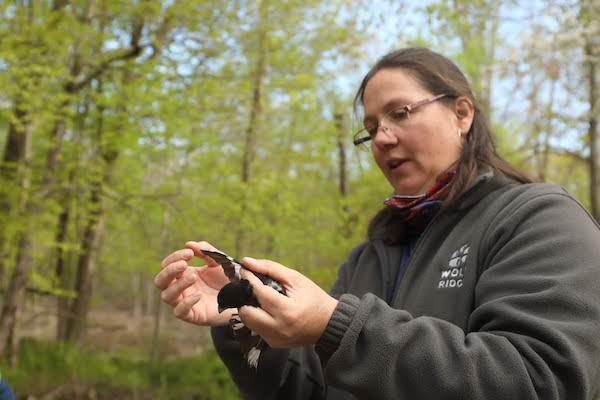Understanding molt–the process by which birds replace their feathers–is critical for bird banders. Recognizing and interpreting patterns in ‘new’ versus ‘old’ feathers in a captured bird can reveal its age, greatly increasing the value of the information that the banding record provides for science and conservation.
In November, Dani Kaschube–IBP's MAPS program coordinator–presented a webinar on molt for the Western Bird Banding Association. The webinar focuses on molt in passerine birds (songbirds), beginning with basics and theory of molt and moving on to specific cases studies for bird banders. If you have been intimidated by the study of molt in the past, Dani’s presentation is a great introduction to the subject-she starts at the beginning, and breaks down the topic into easy-to-follow steps.
Dani began her career with IBP as a MAPS summer intern in 1995 and has been banding birds ever since. She is a North American Banding Council Trainer and experienced bird banding instructor.
You can watch the full recording of the webinar (approximately 90 minutes) below. It provides useful information for both beginning bird banders (or any bird enthusiast) and experienced banders. One participant in the live webinar commented:
I've banded over 25,000 birds over 20 years and stumbled my way through Pyle and molt. Dani's webinar was a tremendous review.
We hope you enjoy it!
Basics of Passerine Molt: Theory and Examples. A webinar for the Western Bird Banding Association presented by Dani Kaschube, IBP's MAPS program coordinator.






